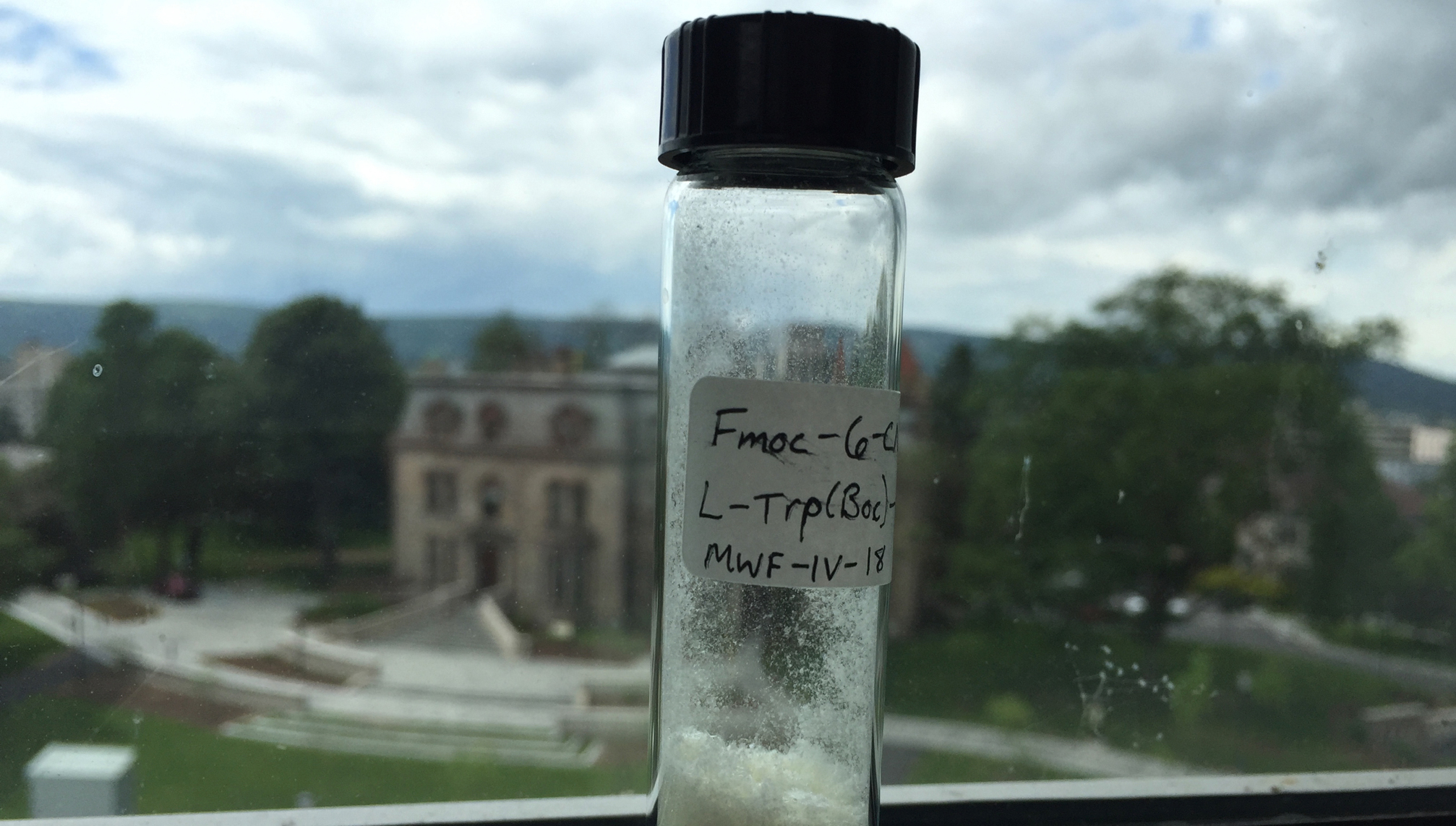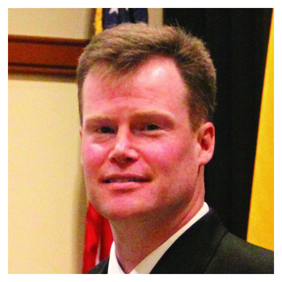Faculty Summer Research: Amino Acids through Spectroscopy

This summer, Michael
Tell us what you are working on this summer.
This summer, I am developing novel syntheses of amino acids modified with infrared “tags.” When incorporated into peptides or proteins, the distance between pairs of these tagged amino acids can be determined by two-dimensional infrared spectroscopy, providing information about how proteins fold and adopt three-dimensional shapes. Detailed knowledge of such folding processes, especially in pathogens, could lead to new therapeutic treatments.
What led you to this project?
I began researching new synthetic methods to create amino acid derivatives as a graduate student at the University of Pennsylvania. At the time, a fellow graduate student, Matthew Tucker '00 (chemistry) was using modified amino acids in his spectroscopy research. As we started discussing our interests, it became apparent that a collaboration would be very fruitful. While our doctoral thesis projects didn’t leave us much time for side projects, we started to work together post-graduation.
We have recently published a paper (Angewandte Chemie, International Edition, 2018, 57, 7528-7532) detailing the synthesis of a modified amino acid and its use in measuring distance in a short peptide by two-dimensional infrared spectroscopy. Current efforts in the research lab in the Loyola Science Center will expand our library of “tagged” amino acids, modifying different positions of the amino acids and incorporating more sensitive infrared-active groups. Once synthesized, they will be incorporated into more complex peptides and proteins for analysis by infrared spectroscopy.
Do you think it will inform your work at Scranton?
Because this research is at the interface of three disciplines (organic synthesis, biochemistry, and infrared spectroscopy), it is one way for students in CHEM 232: Organic Chemistry I to see an application of infrared spectroscopy that extends to several areas. For chemistry and biochemistry majors, I have incorporated some of the synthetic methods we have used into the CHEM 330L: Organic Chemistry III Laboratory curriculum.
Hands-on experience with such techniques is important for students pursuing careers in biochemistry or medicinal chemistry. Furthermore, this research area continues to provide students in the chemistry department with a framework in which they can explore their own thesis projects. For example, the paper cited above included an undergraduate coauthor, Philip Gilmartin ’16, who is currently an NSF predoctoral fellow at the University of Pennsylvania.

Michael






